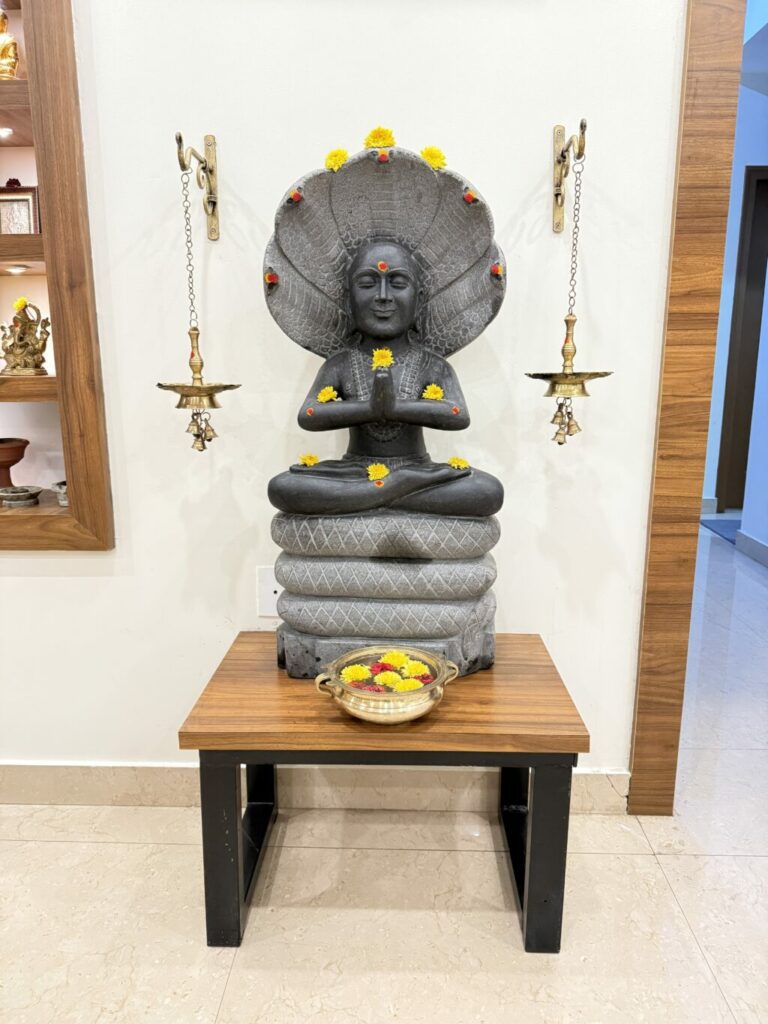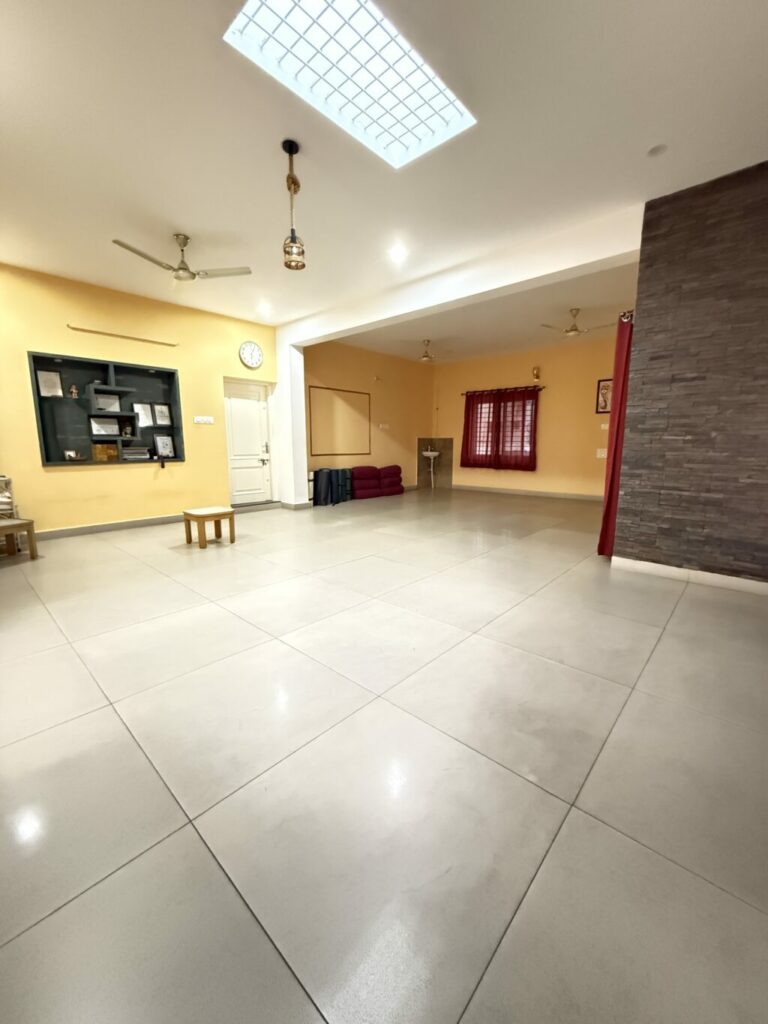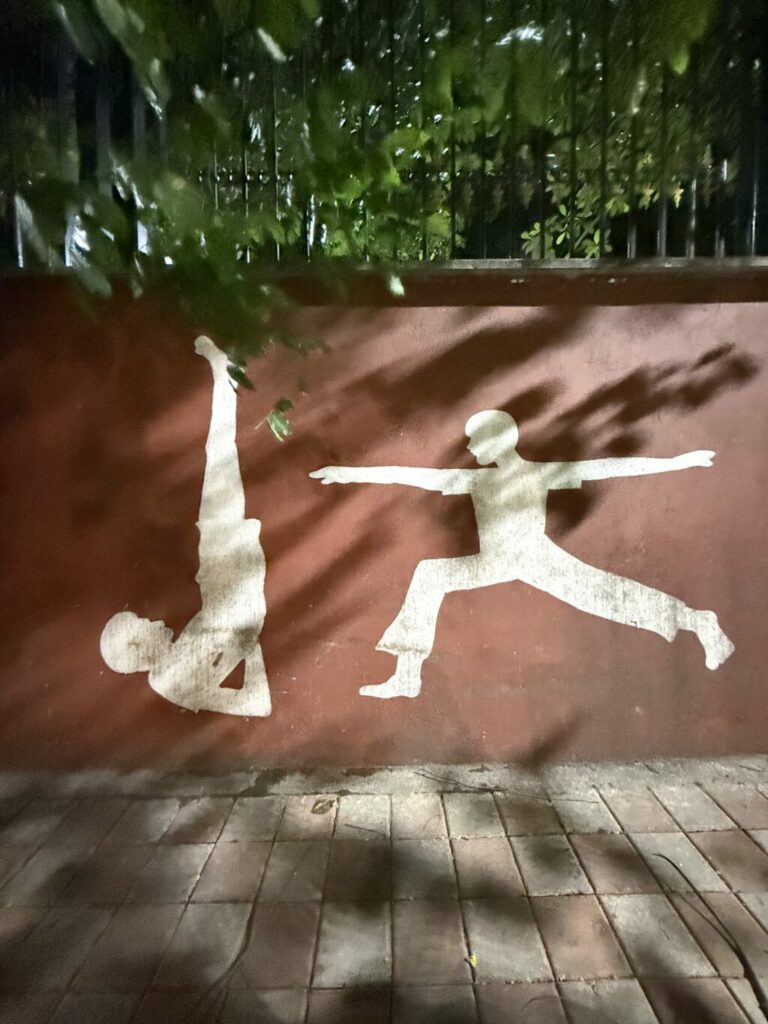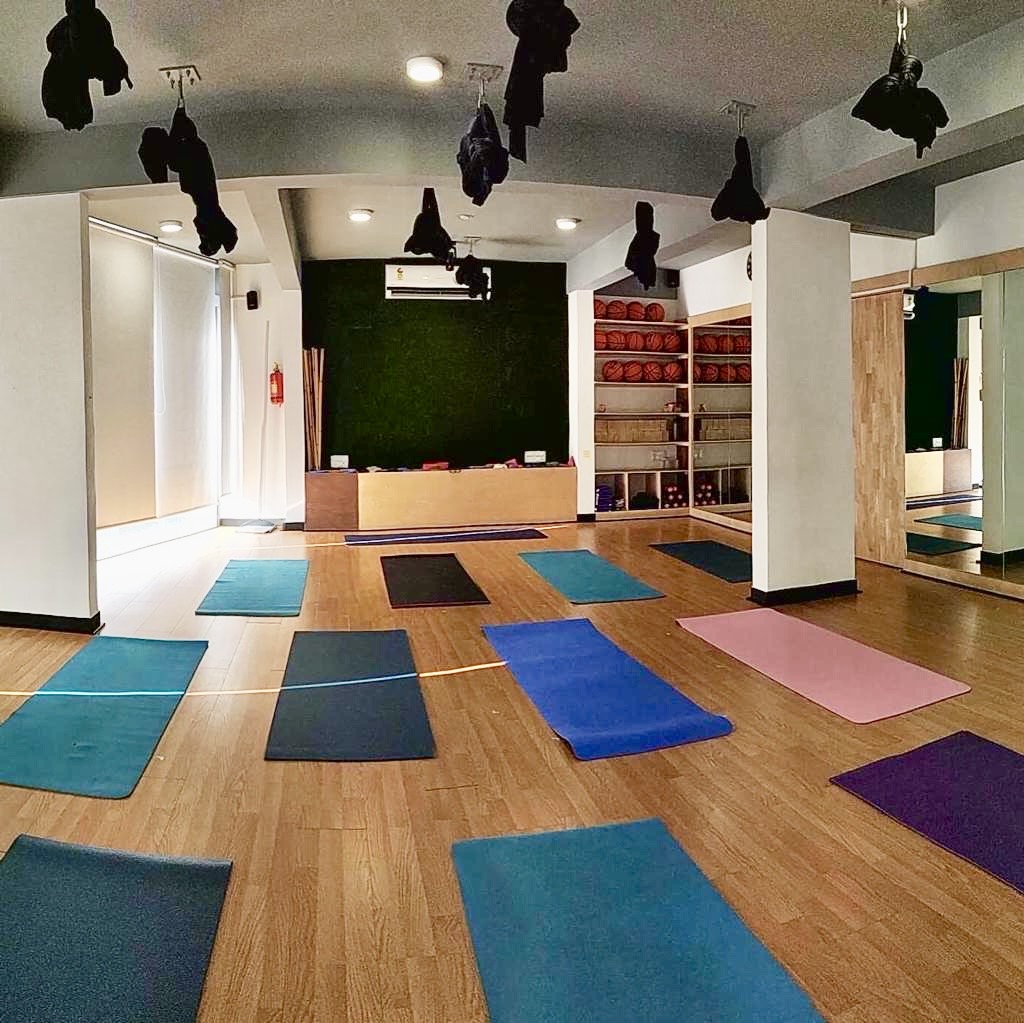Thirteen years ago, I wrote a piece for Seattle Yoga News about yoga in India versus America. Back then, my observations came from living in India as a yoga student & teacher before and having newly moved to America. In that article, I described India’s yoga landscape as fragmented, a little hard to access, and deeply rooted in tradition. America, by contrast, felt overly commercial, less authentic and buzzing with yoga studios on every corner.
Fast forward to today, 13 years later. I want to do an update. I returned to India after 6 years— and I was curious to see how the yoga landscape had changed. I wanted to see if the India I left behind, where finding a drop-in yoga class required determination, still existed. Spoiler: it doesn’t.

From Scarcity to Saturation: Yoga’s New Ubiquity in India
When I left India over a decade ago, “yoga studios” weren’t common. There were shalas — traditional spaces of learning, often tucked away in quiet neighbourhoods. A shala was not just a place to do poses; it was a school where you studied under one teacher for years, diving deep into philosophy, pranayama, chanting, and lifestyle. These teachers weren’t really products of a 200 hour yoga teacher training. They had often spent their entire life in the pursuit of knowledge.
Studios, on the other hand, were more transactional. You paid for a class, showed up, did some yoga and left. Back then, India’s yoga world was mostly shalas. If you wanted to learn, you might have to move to another city and study full-time. They were pockets of yoga available but it was not available easily to the masses back then.
This time, I was stunned. Yoga is everywhere. In Bengaluru, within minutes of my parents’ home, I could find multiple classes starting at dawn. In Mysuru, yoga studios were on nearly every street. It felt like a complete reversal from the India I remembered — and in the best way possible. What used to be a challenge is now effortless.

The Pulse of Indian Cities and How It Shapes Yoga Practice
If you’ve ever been to Bangalore, you know the city’s traffic is… legendary. Travelling even a few kilometres can take over an hour, thanks to narrow roads, packed streets, and unplanned growth. It’s like LA traffic on steroids, but with more scooters, auto rickshaws, trucks and the occasional cow.
This urban reality has shaped how yoga happens in India. Most people practise close to home, within walking or driving distance. Studios are embedded in micro-communities where students live, shop, and send their children to school. You’ll find classes on rooftops, in converted living rooms on the top floor of the home, and even behind someone’s home like a guest suite.
Daily life in India supports this kind of localised yoga. Groceries get delivered. Domestic help manages household chores. Children often have school transport or a driver. With the essentials taken care of nearby, the neighbourhood studio becomes the go-to option. Unlike in America, where students might drive 20–30 minutes to a studio, in India many would never consider crossing the city for yoga.

Shalas vs Studios: Then and Now
One of my favourite shifts to witness has been the coexistence of traditional shalas and modern studios. You still find spaces like the one where I studied — big, bare rooms, no mirrors, no merchandise, and no frills. Shoes left outside, phones put away, no distractions. Teachers still carry forward the lineage-based approach, where you show up consistently and surrender to the process.
But alongside these, you’ll see commercial studios with reception desks, changing rooms, props, rooftop views, and a menu of class times. Classes often run in “batches” — early morning, mid-morning, and evening — to fit into the rhythm of Indian life. Sundays are often studio holidays, something that surprised me after years of American studios running seven days a week.
And then there’s the rooftop yoga boom. In space-constrained cities, terraces are gold. Many studios shield them from the elements with shade panels and run classes as the sun rises, creating a beautiful blend of tradition and innovation.

What’s Changed Since My Last Visit
Thirteen years ago, I wrote about the scarcity of options, the deep commitment expected from students, and the slower pace of change. This trip, I saw:
- Props in every studio — Aerial yoga is gaining popularity, alongside ropes, bolsters, and belts.
- Rotation of styles instead of fixed ones — Instead of committing to one style indefinitely, students now experience variety, from hatha to vinyasa to pranayama-focused classes.
- Part-time teachers balancing other work — Some teach mornings or evenings while running other businesses or managing homes, while others commit full-time.
- No waivers, no paperwork — You walk in, pay, and practise. It’s freeing, though it made me pause after years of American legal formalities and the prevalence of fear.
And yes, chanting is still alive in almost every class. Not just “Om,” but prayers invoking gratitude and wellbeing for all — a beautiful reminder of yoga’s spiritual roots. To me it was one of the most grounding moments of yoga classes in India.
Tradition Meets Trend: The Influence of Social Media & Yoga Day
Since I left India, two big forces have shaped yoga’s visibility here: the explosion of social media and International Yoga Day.
Instagram has brought yoga into living rooms, rooftops, and beaches across the country. Teachers share snippets of philosophy, flows, and asanas with audiences worldwide. Yoga Day — now an international event — has cemented yoga as a point of pride, with mass gatherings, government support, and corporate sponsorship.
It’s also worth noting the larger context. India, after 78 years of independence, is reclaiming and celebrating cultural traditions that were suppressed or diluted during colonial times. Yoga is part of that revival, not as an export for the West but as a living, breathing practice for its own people.

Cultural Nuances You Won’t See in the West
There are moments in Indian yoga spaces that you simply don’t encounter in America. Students arriving in everyday clothes, practising, then heading home to shower. Teachers brewing chai in the corner after class. Friends staying back to chat, share snacks, or help roll up mats.
There’s less spoonfeeding — you’re expected to be responsible for your own props and learning. There’s modesty in attire, but warmth in connection. And there’s a sense that yoga is woven into life, not just a scheduled activity on a calendar. People aren’t rushing to class. There’s a joy to meeting strangers in a yoga class and everyone supports another. You get a sense of community and simplicity woven in.
Looking Ahead
Walking back into Indian yoga studios after more than a decade, I felt a mix of awe, gratitude, and curiosity. Yoga here has grown in reach without losing its soul — though it now wears more outfits, uses more props, and sometimes lives on Instagram stories. But since there is a lot of quantity, you will need to sort out the quality too.
Thirteen years ago, I wrote from the perspective of someone leaving India, wondering how its yoga would evolve. Today, I write from the perspective of someone returning — and finding a country where yoga is thriving, localised, and very much alive.
If you’re a yoga student or teacher curious about India’s yoga culture, there’s never been a better time to visit. Just be ready for early mornings, rooftop classes, and perhaps a little chanting after savasana.
Have you subscribed to my weekly yoga podcast yet? You can hear more about this topic and others for free every week. Available anywhere you stream podcasts. Just look for Let’s Talk Yoga & hit subscribe for all weekly yoga updates and resources.
